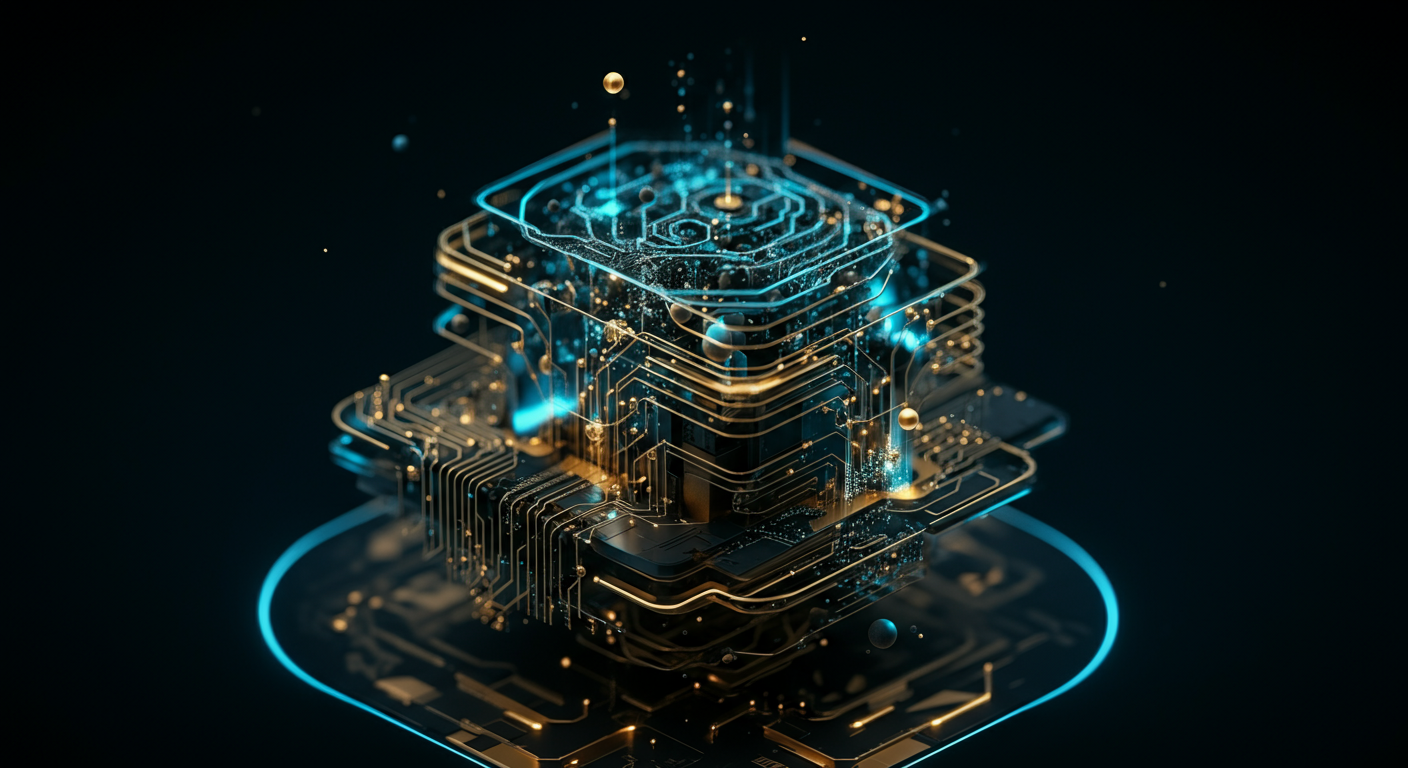Checkpoint-Engine: Revolutionizing LLM Inference and Reinforcement Learning

Introduction: The Dawn of Real-Time LLM Adaptation
Forget static, pre-trained Large Language Models (LLMs) – the future demands dynamism.
The Static LLM Problem
Current LLMs are like fossils: impressive, but frozen in time. Once trained, their knowledge and behavior are fixed, making them ill-equipped to adapt to evolving data or user preferences during inference. This inflexibility is a major hurdle for applications requiring constant learning and personalization. Think of it this way:
Imagine a chess-playing AI that can't learn from its mistakes.
Checkpoint-Engine: A New Paradigm
Checkpoint-Engine, developed by Moonshot AI, offers a revolutionary solution: middleware that enables real-time model weight updates during LLM inference. This means the model can continuously adapt its behavior based on new data and user interactions, leading to significantly improved performance and personalization. With Checkpoint-Engine, models can now perform real-time model weight updates for LLMs.
Reinforcement Learning and Adaptive AI

The implications for reinforcement learning (RL) are huge. With real-time weight updates, AI agents can learn much faster and more effectively in dynamic environments. For example, it will now be simpler to use AI to create dynamic dynamic LLM inference engines. Consider how this could help in:
- Gaming: AI opponents that learn and adapt to player strategies in real-time.
- Robotics: Robots that can quickly adjust their movements and behaviors based on changing conditions.
- Personalized AI Agents: Virtual assistants that continuously refine their understanding of your needs and preferences.
Here's the deal: Checkpoint-Engine is shaking up how we handle LLM inference and reinforcement learning.
Understanding Checkpoint-Engine: Architecture and Functionality
Checkpoint-Engine tackles a major bottleneck: the time it takes to update model weights in Large Language Models (LLMs) during inference. Let's break down how it works.
Core Architecture
Checkpoint-Engine essentially acts as a middleware layer between your LLM inference engine (think Cerebras or Groq) and the system providing weight updates. A Checkpoint-Engine architecture diagram will show that:
- It intercepts weight updates, queuing and scheduling them efficiently.
- It manages the process of applying those updates to the model in a way that minimizes disruption.
- By decoupling weight updates from the inference process, it improves overall performance.
Model Weight Update Process in Checkpoint-Engine
The model weight update process in Checkpoint-Engine is pretty clever. Imagine you're swapping parts in a Formula 1 car while it's still racing:
- The Engine receives new weights from a reinforcement learning or fine-tuning process.
- It schedules these updates, prioritizing based on factors like urgency and dependencies.
- It applies the updates in small batches, using techniques like shadow weights or gradient accumulation, to keep inference going smoothly. The update process is carefully orchestrated to maintain a high degree of consistency.
Performance Impact
The key is minimizing the impact of these updates.
- Latency: Reduced latency in applying new weights.
- Throughput: Maintained, or even increased, throughput during model updates.
- Memory Overhead: Clever memory management avoids excessive overhead.
Supported Frameworks and Scalability
Checkpoint-Engine plays well with major LLM frameworks like PyTorch and TensorFlow. It's also designed to scale, supporting distributed inference setups. Hardware platform flexibility is another key attribute.
In essence, Checkpoint-Engine optimizes the mechanics of keeping your Conversational AI models fresh and relevant without sacrificing performance. We're just scratching the surface here; future articles will dive into specific use cases and advanced configurations.
Checkpoint-Engine promises to redefine how we approach reinforcement learning (RL).
Checkpoint-Engine and Reinforcement Learning: A Perfect Match
The secret sauce lies in Checkpoint-Engine's Checkpoint-Engine ability to swiftly checkpoint and restore model states, offering a critical advantage in the iterative process of RL. This tool enables developers to build, train, and deploy AI models faster and more reliably.
Real-Time Adaptation
Imagine training a robot to walk; with real-time model adaptation, every stumble becomes a learning opportunity processed and integrated almost instantaneously.
- Adaptive Learning: Traditional RL struggles with dynamic environments; real-time model adaptation in RL allows agents to adjust on-the-fly.
- Enhanced Stability: Quick checkpointing ensures a rapid return to stable states after a disruptive update.
- Faster Convergence: By immediately incorporating new data, models converge to optimal policies faster than with batch updates.
Applications and Examples
Checkpoint-Engine for reinforcement learning agents has a broad range of applicability:
- Game Playing: Enhanced adaptability in complex scenarios.
- Robotics Control: Real-time error correction and environmental adjustments.
- Resource Management: Dynamic allocation based on immediate needs.
Challenges and Considerations
Updating model weights mid-flight carries inherent risks, requiring careful management to prevent catastrophic failures. However, with the introduction of new reinforcement learning agents, ensuring stability and convergence remains a crucial challenge.In short, Checkpoint-Engine isn't just another tool; it's a paradigm shift, enabling smarter, faster, and more robust RL algorithms, opening new frontiers in AI and automation. The future of RL? It's looking decidedly brighter.
LLMs are about to do a whole lot more than generate text, and Checkpoint-Engine is a key part of that evolution.
Beyond Reinforcement Learning: Expanding the Horizons of Dynamic LLMs
While Reinforcement Learning is a hot topic, the true potential of Checkpoint-Engine lies in its versatility for a wide range of dynamic LLM applications.
Personalized AI Agents with Dynamic LLMs
Imagine personalized AI agents that adapt to your individual preferences in real-time.
- Checkpoint-Engine enables models to continuously learn from user interactions, creating a tailored experience.
- For example, a language learning app could adapt its difficulty and teaching style based on your progress and areas of weakness.
- These personalized AI agents with dynamic LLMs offer a far more engaging and effective user experience.
Dynamic Content Generation Using Checkpoint-Engine
Consider dynamic content generation – tailoring content based on immediate audience interaction.
- > Imagine a news platform that automatically adjusts headlines and article summaries based on user click-through rates.
- Checkpoint-Engine could enable models to rapidly prototype different content variants and select the best-performing one.
- This dynamic content generation using Checkpoint-Engine leads to increased user engagement and content relevance.
Anomaly Detection and Beyond
Checkpoint-Engine isn't limited to user-facing applications; it also has great potential for anomaly detection.
- By continuously adapting to changing data patterns, models can become more sensitive to unusual behavior.
- This could be applied to fraud detection in financial systems or predictive maintenance in industrial settings.
Checkpoint-Engine implementation isn’t rocket science, but it does accelerate LLM inference and reinforcement learning.
Software and Hardware Requirements
To dive into Checkpoint-Engine, you’ll want to ensure your setup meets the necessary requirements. Think of it like assembling the right ingredients before baking a cake – essential for success!- Software: Python 3.8+, PyTorch 1.10+, and CUDA 11.3+ are the base. Hugging Face Transformers and Accelerate libraries will also be needed for the full experience.
- Hardware: A GPU with ample memory is recommended, especially when dealing with larger models. More VRAM equates to smoother sailing.
Code Examples and Tutorials
Let’s get our hands dirty with some code, shall we? Here's a basic snippet to get you started:python
from checkpoint_engine import CheckpointEngine
model = MyModel() # Initialize your model
engine = CheckpointEngine(model)
engine.load_checkpoint("path/to/checkpoint") # Load a pre-trained checkpoint
output = engine.infer(input_data) # Run inference
Need a more detailed walkthrough? Explore the official Checkpoint-Engine implementation guide for comprehensive tutorials and examples.
Addressing Common Challenges
Expect some turbulence along the way – that’s perfectly normal. Here are a couple of common issues and how to navigate them:- Memory Issues: Utilize techniques like model parallelism and gradient accumulation to mitigate memory constraints.
- Compatibility Problems: Ensure your software versions align with Checkpoint-Engine's dependencies. Mismatched versions can cause unexpected errors.
Implementing Checkpoint-Engine can significantly optimize your AI workflows if you arm yourself with the right resources. Now go forth and build!
AI is no longer a static entity, it's evolving at warp speed.
The Rise of Adaptive AI
We're moving beyond static models; the future lies in dynamic Large Language Models (LLMs) and adaptive AI. Technologies like Checkpoint-Engine, which facilitates rapid checkpointing and model switching, are paving the way for real-time model adaptation.
Imagine an LLM that subtly shifts its tone depending on the user's emotional state, or a coding assistant that adapts to your coding style as you type.
Impact Across Industries
- Customer Service: Imagine AI agents that analyze customer sentiment and dynamically adjust their responses for optimal empathy.
- Content Creation: Real-time personalization of marketing copy becomes a reality, boosting engagement and conversion rates.
- Software Development: Software Developer Tools will evolve to provide context-aware suggestions, anticipate errors, and even refactor code on the fly.
Ethical Considerations for Real-Time Model Adaptation

As AI becomes more adaptive, we must address critical ethical considerations for real-time model adaptation, namely:
- Bias Amplification: Dynamic adaptation could inadvertently reinforce and amplify existing biases.
- Transparency: Users deserve to know when and how an AI model is adapting, fostering trust and accountability.
Checkpoint-Engine isn't just an incremental improvement; it's a fundamental shift in how we approach LLM development.
Revolutionizing LLM Inference
Checkpoint-Engine offers dynamic adaptation of Large Language Models (LLMs) during inference, optimizing performance in real-time. For example, a writing AI tool benefits from Checkpoint-Engine by dynamically adjusting its model parameters based on the content being generated, boosting both speed and quality.The Power of Reinforcement Learning
It greatly enhances reinforcement learning by enabling quick and efficient experimentation.- Enables faster iteration cycles for Reinforcement Learning with Human Feedback (RLHF).
- Accelerates the training process for code assistance tools allowing for rapid deployment of optimized models.
- >This allows AI developers to fine-tune LLMs with a speed and precision previously unattainable.
Dynamic Adaptation: The Key to Future AI
The real magic lies in dynamic adaptation. It represents a move away from static, one-size-fits-all AI models towards more responsive and intelligent systems. The future impact of Checkpoint-Engine is the importance of dynamic adaptation in AI.- Reduced computational costs, making LLMs more accessible.
- Improved accuracy and relevance, leading to better user experiences.
- Greater flexibility in handling diverse tasks and datasets.
Keywords
Checkpoint-Engine, LLM inference, reinforcement learning, dynamic LLMs, model weight updates, Moonshot AI, real-time model adaptation, AI middleware, adaptive AI, LLM frameworks, personalized AI, dynamic content generation, RL agents, model convergence, AI architecture
Hashtags
#AI #MachineLearning #LLM #ReinforcementLearning #CheckpointEngine
Recommended AI tools

Your AI assistant for conversation, research, and productivity—now with apps and advanced voice features.

Bring your ideas to life: create realistic videos from text, images, or video with AI-powered Sora.

Your everyday Google AI assistant for creativity, research, and productivity

Accurate answers, powered by AI.

Open-weight, efficient AI models for advanced reasoning and research.

Generate on-brand AI images from text, sketches, or photos—fast, realistic, and ready for commercial use.
About the Author

Written by
Dr. William Bobos
Dr. William Bobos (known as 'Dr. Bob') is a long-time AI expert focused on practical evaluations of AI tools and frameworks. He frequently tests new releases, reads academic papers, and tracks industry news to translate breakthroughs into real-world use. At Best AI Tools, he curates clear, actionable insights for builders, researchers, and decision-makers.
More from Dr.

